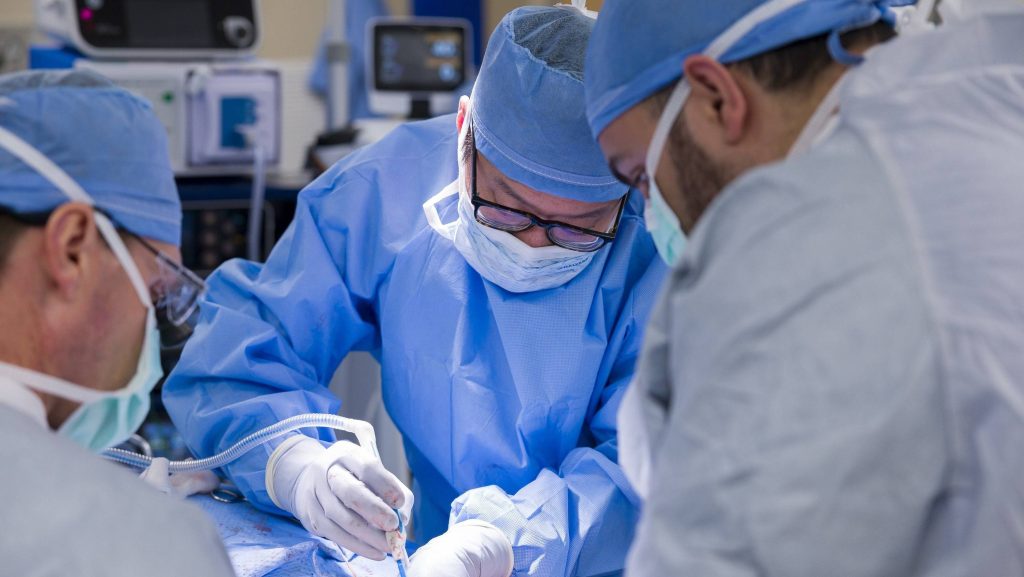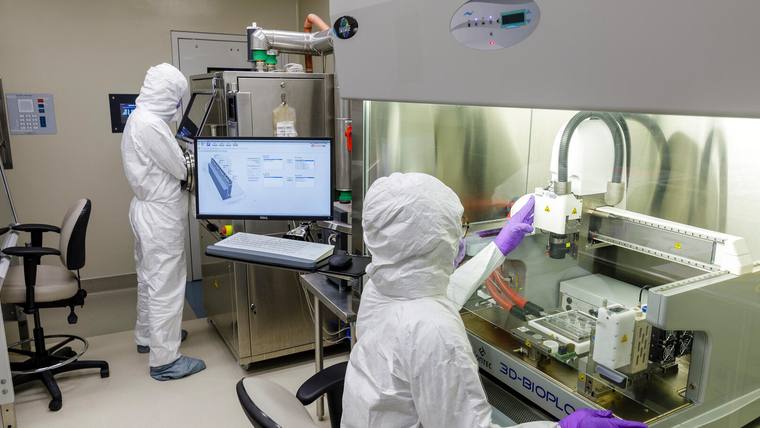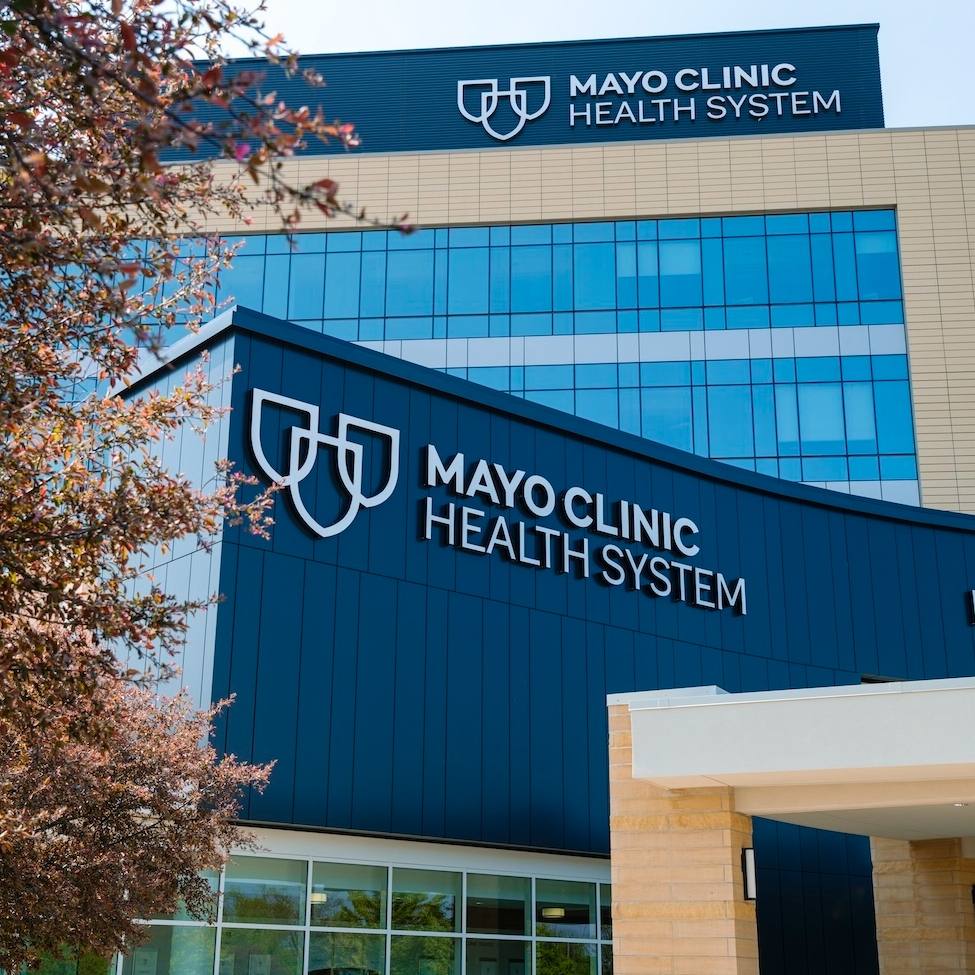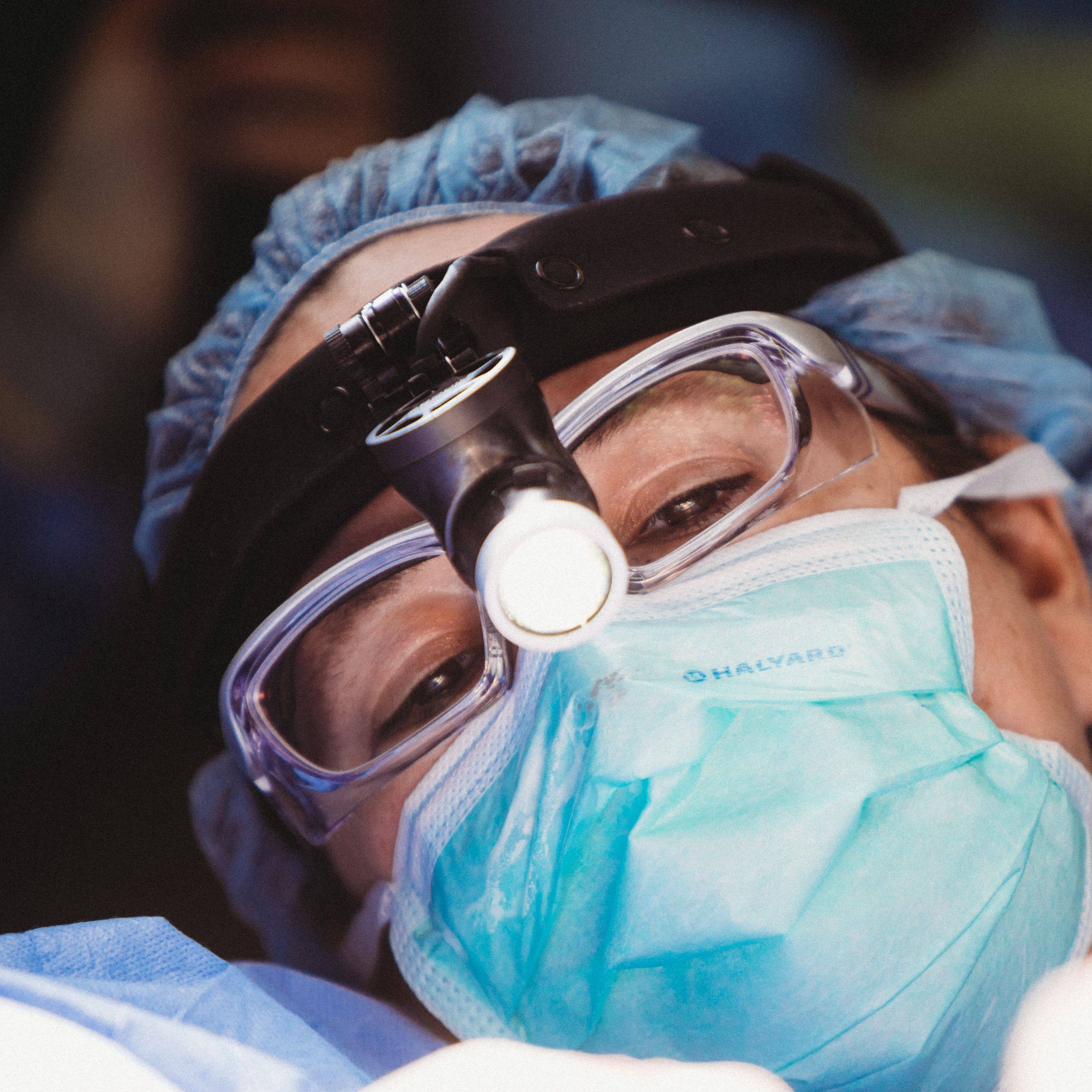-
Paving the way for future larynx transplants through regenerative science

Surgeons at Mayo Clinic in Arizona perform a total larynx transplant
Mayo Clinic envisions a day when regenerative science makes it possible to offer a total larynx transplant to anyone who needs one. The research team of David Lott, M.D., hopes to overcome a shortage of donor organs and minimize the need for lifelong drugs to prevent organ rejection. Through regenerative sciences, the team is investigating ways a person's own tissue could be used as a natural therapeutic to integrate a donor larynx into the body with less risk of rejection.
"Immune suppressant drugs keep the body's defense system from mistakenly attacking donor tissues and organs. However, they come with risks. In some cases, these powerful drugs could cause infections or cancer," says Dr. Lott, director of the Mayo Clinic Larynx and Trachea Transplant Program. "Our goal in establishing a larynx transplant program is to improve treatment options and quality of life for patients."
Shedding cells, growing tissue
Researchers in the Head and Neck Regenerative Medicine Lab are investigating a technique, called decellularization, in which all cells are washed from donor tissues and organs. The laryngeal organ structure that remains has shown the potential to attract new cells and spur the tissue growth needed to meld the new organ into the body's function.
"Removing cells from donor organs could potentially reduce immune responses that lead to rejection. We could potentially accept more organs that are not an exact match, thereby overcoming the shortage of viable organs available for people with laryngeal diseases," says Dr. Lott. "We also hope decellularization would reduce or eliminate reliance on the immunosuppressant drugs."
Bioprinting to heal a damaged larynx
Another approach is looking at how 3D bioprinting could help patients with laryngeal disease.
Right now, surgeons can use a 3D bioprinter and living cells to print three-dimensional structures that are an exact replica of the patient's damaged tissue. The surgical team then replaces the diseased portion of the larynx with the 3D implant to restore function. This pioneering procedure preserves the healthy portion of the larynx, sparing a patient the pain and hardship of removing the entire larynx—a procedure known as a laryngectomy.
In the future, the team aspires to use the 3D bioprinter to bioengineer a total larynx for patients. First, the team must understand how to grow blood vessels and deliver oxygen and nutrients into the bioprinted organ.
"Our research will focus on whether a bioprinted scaffold could function like a natural organ. The concept of using patients' own cells to print a larynx customized to their individual physiological needs is very exciting," says Dr. Lott. "We are still quite a way off from making this a reality. It will require more years of research to understand if this is a viable approach to treating laryngeal diseases."

Researchers use a 3D bioprinter for partial larynx implants
Many patients are waiting for treatment
The larynx, also known as the voice box, is a delicate and complex organ that is vital to breathing, speaking and swallowing.
The American Cancer Society estimates that 12,650 people in the U.S. will be diagnosed with laryngeal cancer this year. Many others will lose laryngeal function through traumatic injury.
After a laryngectomy, a person must breathe through a hole in the neck and eat through a feeding tube. Even simple tasks like taking a shower can become burdensome. The ability to prevent a laryngectomy can restore quality of life to thousands of people.
"We hope through research and advancements in regenerative biotherapeutics, we can establish the scientific foundation for a larynx transplant program that brings this procedure to patients more broadly," says Dr. Lott.
On February 29, Dr. Lott led a team of six surgeons in transplanting a donor larynx into a 59-year-old patient with a voice box damaged by cancer. It was Mayo Clinic's first larynx transplant and the first known larynx transplant in the U.S. for a patient with active cancer done in a clinical trial. Researchers hope to build a body of knowledge and scientific evidence to expand the procedure to patients without a larynx and to those with active cancers.
Dr. Lott is also the associate director of Mayo Clinic's Center for Regenerative Biotherapeutics in Arizona and the chair of the Department of Otolaryngology at Mayo Clinic in Arizona. The Center for Regenerative Biotherapeutics supports Dr. Lott's regenerative sciences research as part of its objective of delivering new biotherapeutics to improve patient care.
###
Related stories:
3D bioprinting: transforming medical images into human tissue
Related Articles







